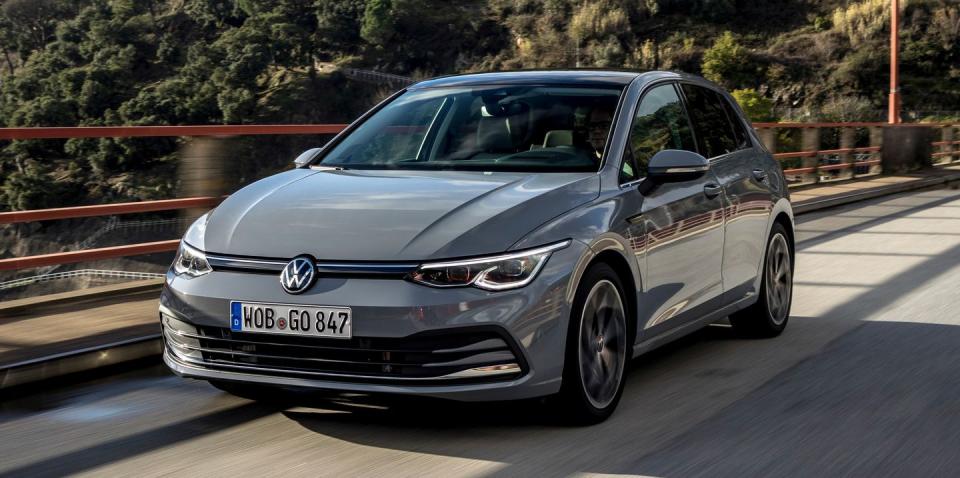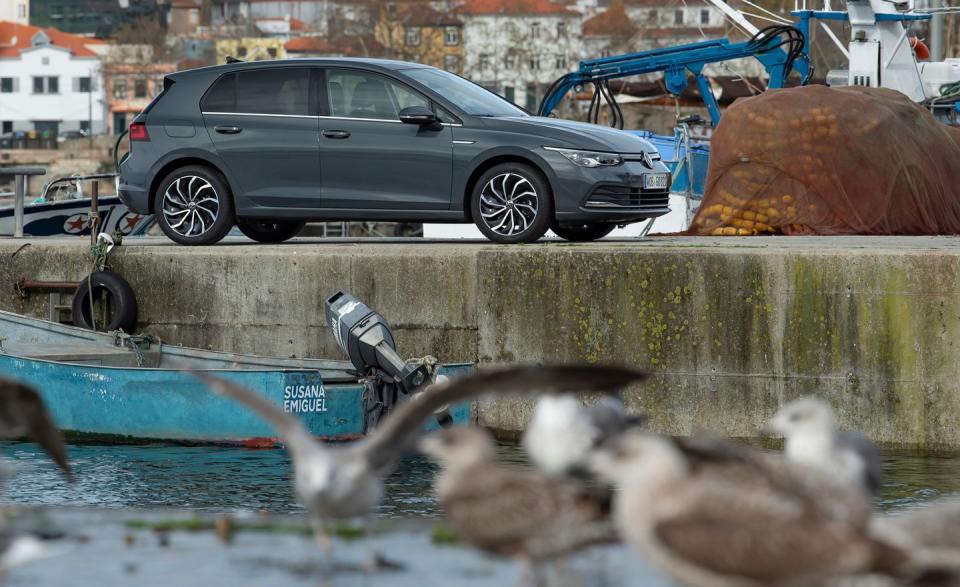2020 Volkswagen Golf Has Evolved into a Futuristic Device, May Not Come Stateside

Once upon a time, the launch of a new Volkswagen Golf was considered a major international automotive event. But for the new eighth-generation Golf that goes on sale in other markets as a 2020 model and may or may not reach the United States in mass-market form, it's all a bit different. That's because VW is pursuing a new electrification strategy with the Golf-sized ID.3 as both a precursor and the anchor of its EV push. The actual Golf plays second fiddle. But that shouldn't distract us from taking a closer look at the latest version of Germany's iconic compact hatchback. Within the evolving automotive landscape, can the Golf continue as the company's most popular offering?
VW's engineers and designers have done their parts to differentiate the Mark VIII Golf from its predecessor. While its overall proportions remain similar and it is still based on the Volkswagen Group's highly flexible and increasingly ubiquitous MQB architecture, the new model is easy to distinguish from the last generation. The front end in particular looks quite distinct, with a slim grille and prominent lighting accents that advance the Golf's styling evolution while maintaining its classically demure appearance. Like it or not, it is a welcome departure from the angry faces and gaping mouths that adorn most cars in this segment.

A Digital Future
While the exterior design is evolutionary, the interior marks a sharp departure from previous generations. Early in its development, VW made a strategic decision to fit the latest Golf with two TFT displays, as well as touch-capacitive switches and "slider" controls. There are no longer analog instruments in its gauge cluster, and physical ignition keys are virtually gone. The new dashboard places an emphasis on horizontal lines, and the elevated center console now features a small stub of an electronic gear selector—unless you opt for a version with a manual transmission.
The Mark VIII's cockpit is available with screens of different sizes. Our initial drive in Germany only offered exposure to models with the top-level system, which allows operators to move around functions in clusters of tiles, and the color of the digital instrumentation mirrors the selected ambient lighting color. We have mixed opinions on the new cockpit. The look is decidedly futuristic, and it oozes sophistication. On the other hand, the actual value that the high-tech setup may provide to customers, if they manage to master the system's full capabilities, is questionable.
While the displays indeed look sharp, and they render images and map views quickly, the Golf's ergonomics could be better. Searching for new navigation directions, for instance, can be complex. And there are a few areas that underscore that VW has deserted the premium positioning the brand had attained under the reign of Ferdinand Piëch. Material quality, for example, is good but not exceptional; the decor strip across the dash looks decidedly plasticky; and there is no frameless rearview mirror.

Competent and Composed
Much of that criticism is forgotten, or at least forgiven, however, once you get to the business of driving the eighth-gen Golf. The first car we were able to sample featured a turbocharged 1.5-liter inline-four mated to a seven-speed dual-clutch automatic transmission. It also is available with a six-speed manual, but only the automatic comes with a 48-volt hybrid system featuring a belt-driven motor-generator. In both cases, the engine has an entirely unnoticeable cylinder-deactivation system.
Rated at 148 horsepower and 184 lb-ft of torque, it propels the car to 62 mph in a claimed 8.5 seconds and up to a top speed of 139 mph. The 1.5-liter is quiet and smooth, and the dual clutch's shifts are quick and unobtrusive. Yet, while this Golf moves with reasonable quickness, it never feels particularly fast. We actually preferred the 2.0-liter diesel four. Rated at an identical 148 horses but with a far stronger 266 lb-ft of torque, it moves the Golf with authority and emits a muted and reassuring growl. VW has learned some hard and expensive lessons in regard to diesel emissions, and regardless of how good and clean-burning this new 2.0-liter is, it surely won't make the trip to our shores. VW, in fact, has yet to confirm if any Mark VIII Golf models below the GTI and Golf R will be sold in the States.

Neither the 1.5-liter gasoline engine nor the 2.0-liter TDI present much of a challenge to the Golf's supremely capable chassis. Its optional adaptive dampers can be softened and sharpened beyond the preset driving modes. In the stiffer settings, the Golf feels nicely composed and precise, with matching steering feel that strikes a good balance between road-surface feedback and light effort.
Likely Not for Us
In Europe, the new Golf eventually will be offered with three- and four-cylinder gasoline engines and three versions of the 2.0-liter TDI. There also will be two plug-in hybrid models, and both the GTI and the Golf R will receive a significant power boost. Expect almost 330 horsepower for the range-topping Golf R. The Golf's two-door variant is long gone, but a station wagon will return, although likely not for us.
For the U.S. market, the Golf will play as a more premium entry than before. The lineup, at least at first, likely will be limited to the GTI and the Golf R, and even those models won't show up until the Mark VIII is familiar sight on roads in other markets. One thing is certain: VW will continue to offer the Golf with a manual transmission, which helps to soften the shock of its high-tech transition. While the new Golf's truncated lineup, at least in the U.S., surely won't make it VW's most popular entry here, its arrival still will be something worth paying close attention to.
You Might Also Like

 Yahoo Autos
Yahoo Autos 